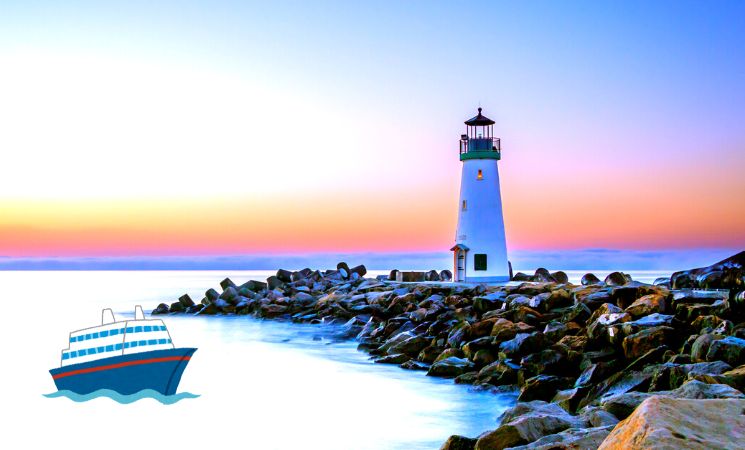Lighthouses have guided sailors for centuries. They stand tall on coasts, islands, and harbor entrances. Their role is to keep ships safe from hidden dangers. Passing near a lighthouse is not only about admiring its beauty. It is about reading the signals it gives and knowing what each one means.

Light Patterns
Every lighthouse has a unique flash sequence. Some blink once every few seconds. Others may flash twice in a short period. This pattern is called the characteristic of the lighthouse. Sailors use it to identify which lighthouse they are near. Charts at sea match these signals to locations.
Light Colors
The color of the light is important also. White often means safe passage. Red or green sectors warn of shallow waters or reefs. By watching the color, a ship’s crew knows whether to stay on course or turn away.
Light Range
The strength of the beam is measured in nautical miles. This is known as the range of the light. It helps sailors estimate their distance from shore. Spotting the beam earlier means they are still far away. Seeing it late means they are close to land.
Position on Charts
Every lighthouse is marked on nautical charts. The captain compares the visible signals with the chart to confirm the ship’s position. This practice is called fixing a position. It is a key step in navigation.
Daymarks
Lighthouses are not only for the night. During the day, sailors look for daymarks. These are the colors, stripes, or shapes painted on the tower. A tall white tower or black and white stripes makes it easy to identify in daylight.
Sound Signals
Fog can hide the brightest beam. For this reason, many lighthouses have foghorns or bells. These sounds travel across the sea when visibility is poor. Hearing a horn can save a ship from drifting into danger.
Why It Matters?
Every detail from a lighthouse carries meaning. The flash pattern, the color, the sound, and the position all work together. Missing any of these signals can put a ship at risk. Paying attention ensures safe passage along coasts and harbors.
Beyond Safety
Lighthouses are also cultural icons. They remind us of history and human effort in keeping seas safe. Just like a Sea Cliff shows the power of nature, a lighthouse shows the power of guidance. Both teach respect for the ocean and its hidden forces.
Conclusion
Passing near a lighthouse is never just about sailing past a tower. It is about reading signals that protect lives. Light, color, sound, and position all matter. For sailors, these details are the difference between danger and safety at sea.

















Leave a Reply